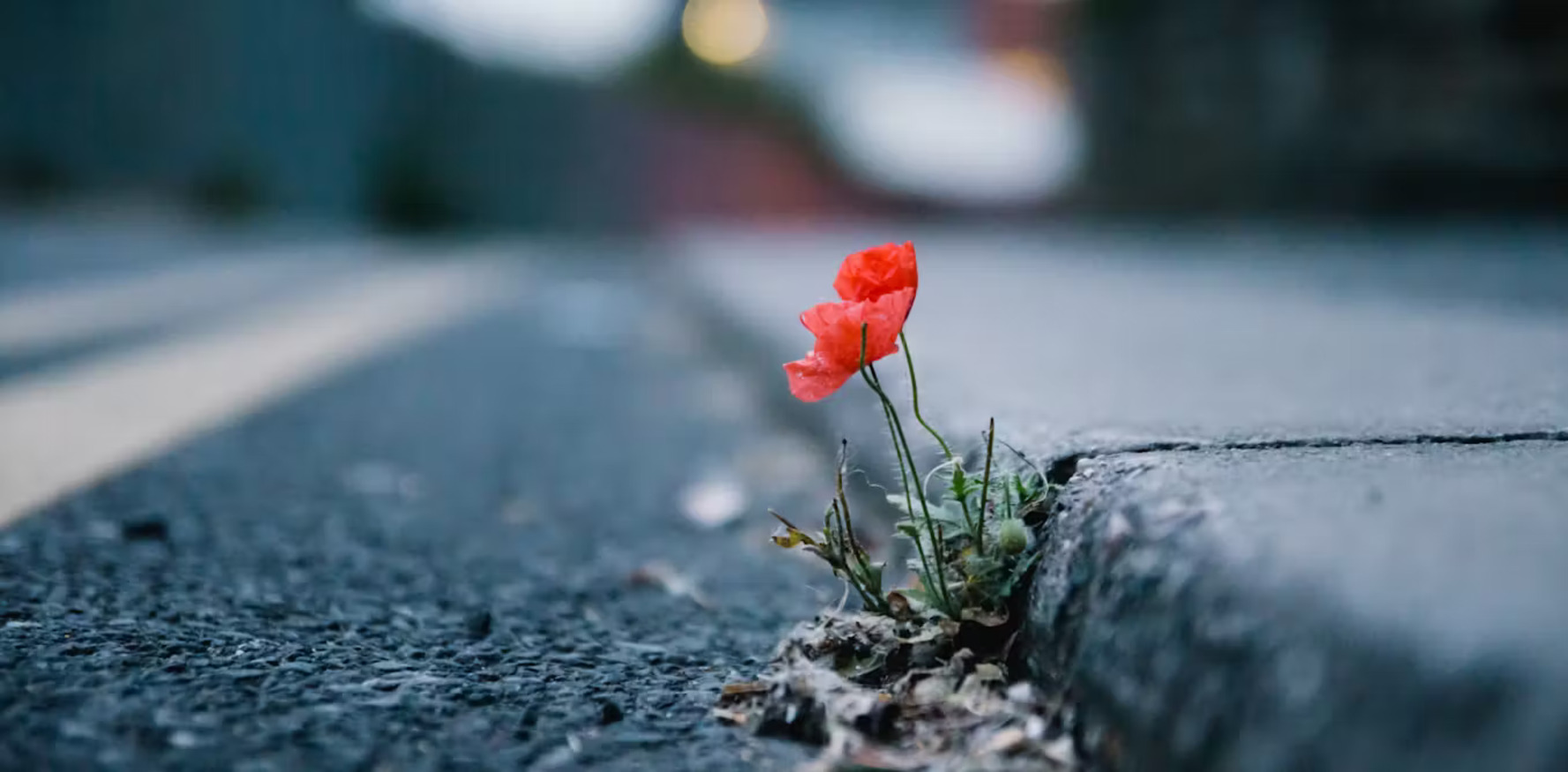[ad_1]
In spring and summer flowers pop up spontaneously in lawns, playgrounds, fields and even cracks in the pavement. But what do you see: weeds or wildflowers?
You might feel a little frustrated when you see wildflowers growing in the street. Why are they thriving while it can be a struggle to get garden flowers to bloom? The simple answer is that they are wild.
For millions of years, they had to make do with the sun, soil and rain nature provided. A windblown seed will land somewhere and try to germinate, but if the conditions are wrong it will not survive long. So many wildflowers evolved to make thousands of seeds (such as poppy, creeping thistle, wild carrot and purple deadnettle.
A dandelion (Taraxacum officinale) produces up to 200 seeds per flower and, on average, 15,000 seeds per plant. In an open field, about one-fourth (3,750) of the seeds land in a good spot and have the right genes to germinate and grow.
Many people think of plants as nice-looking greens. Essential for clean air, yes, but simple organisms. A step change in research is shaking up the way scientists think about plants: they are far more complex and more like us than you might imagine. This blossoming field of science is too delightful to do it justice in one or two stories.
This article is part of a series, Plant Curious, exploring scientific studies that challenge the way you view plantlife.
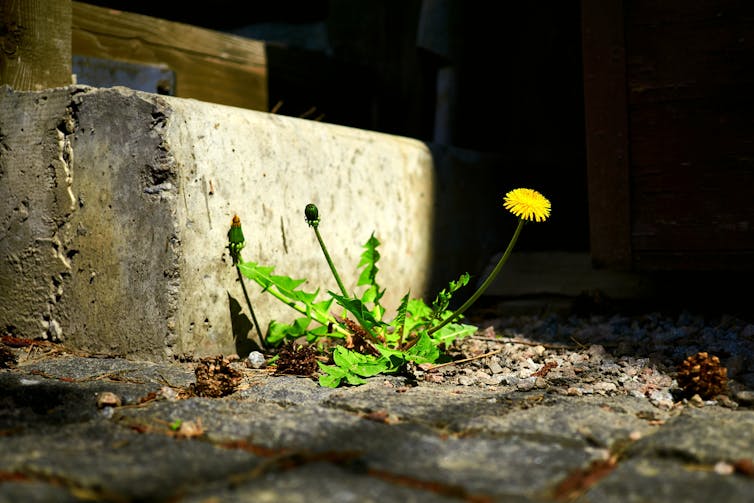
jovani32
Home is where the wall is
Some plants have evolved more elegant tactics to make sure their offspring are set up for success.
A dandelion seed will go where the wind, or a child’s exhale takes it. The ivy-leaved toadflax (Cymbalaria muralis) takes a bit more care. Growing on the wall, their small lilac-blue and yellow flowers turn their heads towards the sunlight to catch the eye of a passing bee or hoverfly.
Once the flower is pollinated and the capsule with seeds begins to develop, the flower turns itself away from the light. Next, it pushes the capsule into a crevice on the wall. Those crevices are the perfect place for those seeds to grow. A wall may not sound like a particularly fertile place, but over time the wind and rain cause dirt and nutrients to get trapped in the pores. This is all the soil the ivy-leaved toadflax needs.
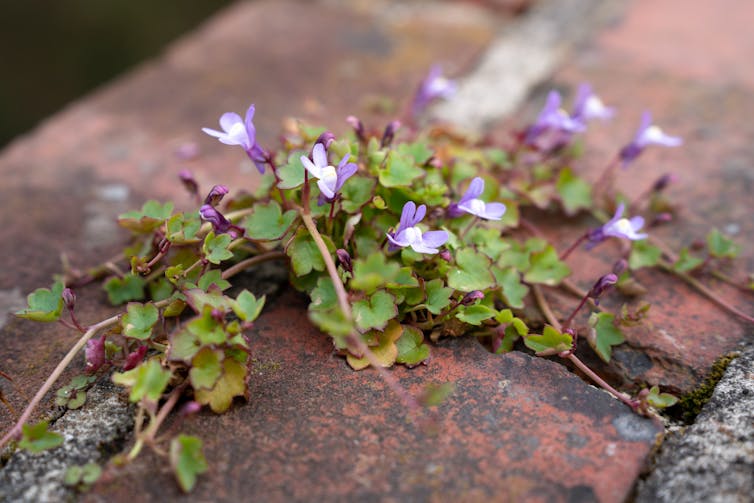
Philip Bird/Shutterstock
Strong, independent and generous
Keeping a grass lawn perfectly, uniformly green is a tough job and bad for the environment, as they don’t provide any habitat for pollinators, among other reasons. Playing grounds and other public fields don’t get much upkeep, but mysteriously the ground is green nonetheless.
Here, often white (Trifolium repens) and red clover (Trifolium pratense) take over the work of the gardener. These plants are the definition of strong and independent. Clovers are drought resistant, maintain soil moisture and fertilise the soil.
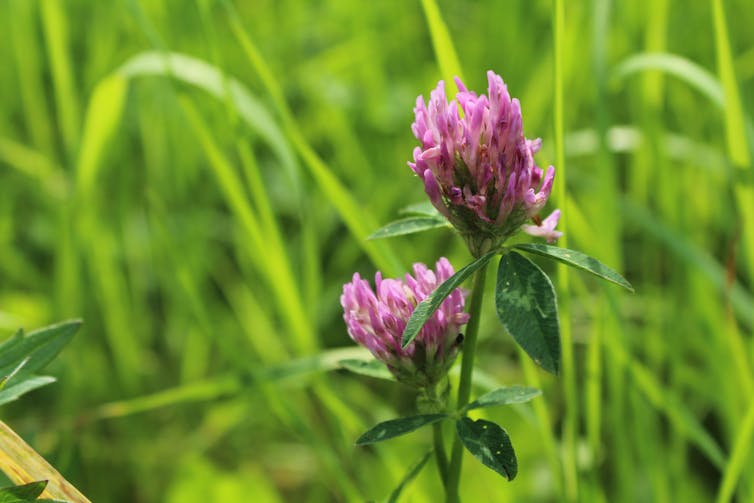
Tom Korcak
To fertilise the soil, clovers make little nodules on their roots which are the perfect home for rhizobium bacteria. The plant gives the bacteria a nice place to live while the bacteria provide the plant with nitrogen.
The clover shares this nitrogen with neighbouring plants via their roots and via a vast network of fungi in the soil. Clover not only keeps a lawn green but also provides nectar to pollinators, such as bees, bumblebees, butterflies and moths.
Wildflowers are multitaskers. They are a source of food for your friendly neighbourhood insects but also benefit the soil.
Dandelion provides nectar for over 187 different species of wild bees. Flowers like dandelion, thistle (Cirsium sp.), poppy (Papaver rhoeas) and chicory (Cichoriu intybus) grow taproots which penetrate deep into the ground and help them survive harsh conditions, such as drought.
Different wildflowers grow different kinds of roots. Together these roots make a great environment for underground life, including bacteria, fungi and bigger critters. These organisms aerate the soil which boosts water regulation. This way the soil can soak up more water and your puddles will drain more quickly after a heavy downpour. These plants provide many unseen services to your own ecosystem.
But can you recognise and name them?
People used to eat all kinds of wildflowers or use them as medicine. For example, poppies were, and still are, used as cough medicine and sedative. You can still buy chicory root powder as a caffeine-free substitute for coffee.
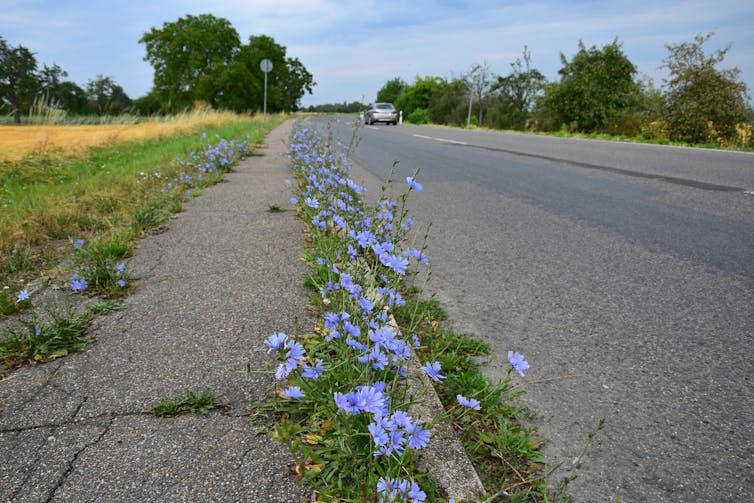
SannePhoto/Shutterstock
Wildflowers have long been part of our cultural heritage as well. Victorians used wildflowers as gifts to convey feelings or secret messages. Poppies were a sign of pleasure, daisies (Bellis perennis) proclaimed innocence, stinging nettles (Urtica dioica) reported scandals and cornflowers (Centaurea cyanus) whispered of hopes in love.
But we are losing our awareness of the living world around us. The scientific term plant blindness describes our inability to notice the plants around us. In a 2010 UK study, teenage students were asked to recognise and name ten common wildflowers, but the vast majority couldn’t name more than three flowers.
However, it has never been easier to learn about plants. Apps that can recognise plants via your phone camera are widely available. Some people are even trying to share their enthusiasm about wildflowers on the street through botanical chalking – drawing a circle around a plant on the pavement and writing down its name in chalk.
The next time you see flowers growing through the pavement, why don’t you stop to take a look instead of just passing by these resilient and beautiful wildflowers.
[ad_2]
